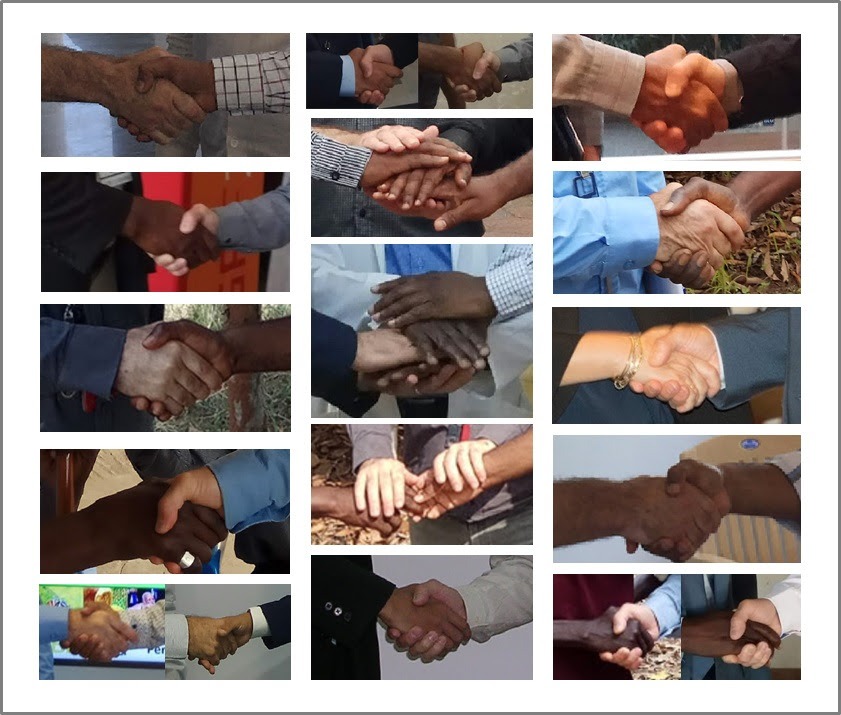HOMOGENEITY OR DIVERSITY, WHICH IS BETTER FOR EMERGING ECONOMIES’ FARMERS?

BY DR. NIMROD

| “Diversity is the ‘raw material’ for innovation, hence for business advantage and rapid economic growth.“ |
| Apologies if this article will make you move uncomfortably in your seat. If it does, please see it as an opportunity to rethink your fears and hopes. |
POSITIVE EXPLOITATION OF DIVERSITY
In the Kibbutz, where I grew up, it was customary that the head of a branch (‘branch’ is the Kibbutz name for a business-center, including agriculture, industry, and services) is replaced every 2 to 4 years.
Does rapid managerial rotation is bad for business and society in the long-term?
During the 1950s and 1960s, Israel’s population increased when newcomers immigrated to Israel from over 30 different countries across all continents. For example, in my elementary school class, we were only 12 kids in my age group, but our parents originated from over 12 countries and four continents.
This massive wave of immigration, of people varying in almost every possible way, created tremendous diversity affecting all areas of life in Israel, including management and business characteristics.
Does having in a community or a company people who came from different countries is a bad thing for business and society?
The rapid change of head of branches (managers) in the Kibbutz took its toll, but at the same time had significant upsides.
Although not all managers were excellent, new ideas continuously floated in, and a broad layer of committed management, having a sense of partnership, was created.
It resulted in a thriving community with an increasingly more robust and sustainable business and social base.
GROWING GAPS
As we entered the third millennium, the gaps in human society between countries (developed and developing) are still enormous, often expanding, with no significant systematic change insight.
Previous attempts to reduce those gaps using the same tools and methods that created those gaps are doomed to fail.
African and Asian farmers that I meet carry the helpless feelings that these gaps and the persistent poverty will last forever, as if they are powerless, having nothing to do to change their future.
If so, where will salvation come from?
The answer is from – Creativity.
Creativity is a phenomenon whereby something somehow new and somehow valuable is formed (Wikipedia).
Does a homogeneous society contribute to creativity?
INNOVATION
Some of the most brilliant minds are of the people in the emerging economies.
Not surprisingly, that fact by itself is not sufficient to spark the innovation and thrust required to bridge the hundreds of years’ gap created by the different histories of those nations.
It’s probably frustrating to know that even though you’re smart, no less than your peers in developed countries, you have no way to bridge the gaps.
If being smart is not enough to bridge historical gaps, then how can we bridge such gaps?
Creativity makes humans different than any other creature walking or crawling on the planet.
Creativity, among others, enables us to innovate and by that to solve problems, to change, advance, and progress toward the future we envision.
We live in the age of innovation, where no company or nation could succeed unless it can innovate… fast enough, competing against the rest of the world.
Innovation is the fastest path to bridging the gaps between countries, races, tribes, cultures, religions, classes, sexes, and age differences.
Could it be unnecessary and redundant to bridge the above gaps?
Could there be no connection and dependency between bridging the above gaps and bridging the gaps between developed and less developed countries?
DISRUPTIVE INNOVATION
Today’s technology, available to the farmers of emerging economies, is far better than that open before the Israeli farmers 50 years ago, when I was a child. However, their current professional and financial results are not as successful as 50 years ago in Israel.
Suppose the gap between developed to less-developed countries is essentially a technological one. Why even advanced African/Asian farmers (who have access to any technology) are not doing as well as their peers in the West?
The fact is that innovation alone, including technological innovation, cannot close the gap between developed and emerging economies.
What emerging economies need is something far more outstanding than technological innovation, something fundamental and powerful that will shake the existing order.
Is something like that even possible?
There is only one available tool in today’s economy that holds the potential to transform the existing reality and its gaps; it is called – disruptive innovation.
“A disruptive innovation is an innovation that creates a new market and value network and eventually disrupts an existing market and value network, displacing established market-leading firms, products, and alliances” (Wikipedia).
Note, disruptive innovation is about innovative business models, although technology could be part of it and energize it.
For example, the Kibbutz’s unprecedented success in agriculture results from a novel business-model (i.e., disruptive innovation) and not due to any technology available only to the Kibbutzs’ farmers.
Given that disruptive innovation results from an innovative business model, do you still think it is impossible to bridge the historical gaps?
DIVERSITY & PLURALISM
Diversity and pluralism serve as accelerators of creativity, innovation, and disruptive innovation.
Generally speaking, the more creative and innovative the organization, e.g., company or country, the greater its chances to survive and flourish.
Organizations of all sizes that have realized this are working vigorously to increase human diversity in their teams to pursue increased and on-going creativity that will propel innovation, leading to improved business results.
Organizations are taking steps to increase creativity, not because of required standards or legislation, but because they understand that it is beneficial and contributes to their business results. Today, even Government organizations and NGOs follow the same route.
Do racism and segregation contribute to improved creativity and financial results?
ANTI-INNOVATION
From the above, it is clear that anything that acts against diversity and pluralism is not contributing to economic progress, while it may impair and slow down the economy.
Therefore, racism, segregation, homogeneity, and fear of change are at the top list of the “destroyers of creativity and innovation.”
It is no coincidence that with the rise of racism in Germany, in the 1930s, scientists and intellectuals left Germany and moved to other countries, more open to accepting the different.
Albert Einstein, who moved from Germany to the United States, and Sigmund Freud, who escaped the Nazis to England, are prominent examples.

Diversity can also increase, as in the USA, where people immigrated due to various reasons, including seeking a better economic future, escaping racism, and being chained in slave ships. Regardless of the reasons, the result is that America became a fountain of initiatives and innovation.
The State of Israel is also the result of the migration of people from dozens of countries, different ethnicities, education, and cultural background. Undoubtedly, this is one of the critical reasons for the continuous successful innovative activity in Israel.
This innovation is reflected in Israel’s economy, for example, in the fact that Israel has the 3rd most companies listed on the NASDAQ, after the US and China. This is very impressive if we keep in mind that Israel’s population is only 0.009 billion, compared to the US 0.331 billion and the 1.4 billion of China.
Is racism is something that is reserved only for other people, e.g., only for whites, or only for men?
History and biology teach us that no one is immune from racism! We are all born with a natural tendency to prefer those who are like us.
We like it when everybody in our organization shares the same religion, culture, political view and agreeing with us on professional issues. It’s so easy and convenient.
We are born with the tendency to prefer and like the ones that are like us and like less, or even hate those different from us. That is how racism begins.
Not being racist results from growing up in a diverse environment or thanks to education.
INTOLERABLE HOMOGENEITY
Due to historical reasons, we tend to think and focus on racism and discrimination in the context of whites versus blacks.
While this issue remains central on the global scale, there are other forms of racism and discrimination within countries that have considerably affected the creativity, innovation, and hence the economic success of emerging economies.
This aspect of racism is entirely in the hands of the local government, leaders, stakeholders, and managers at all levels.
Diversity and pluralism are not about buying different goods made in Japan, Germany, Israel, China, the USA, etc.
It is about the diversity of people, ideas, concepts, etc. It is about actively looking for dis-agreement, for someone who will challenge us, someone who will see things differently, and bring a unique and different point of view.
We increase creativity when we expose people to a diversified environment.
Wouldn’t it be great to see increased diversification and pluralism within the business community and work environment of the naturally diversified continents of Africa and Asia?
A few years ago, Biofeed won the #1 (for small companies) of the Equality Competition, set by the Israeli Ministry of Economy. At that time, most of our team was composed of women, the parents of most workers came from different countries with some immigrated not long before, and even some workers passed the retirement age.
As the company’s founder, this resulted from my decision to diversify and hire according to professional capabilities and the potential contribution to the company’s success, those versus nepotism. Diversification, leading to creativity and innovation, played an essential factor in Biofeed’s on-going success.
The people of Africa deserve to see better times. Those better times will be the results of creativity, disruptive innovation, and the rapid development of successful businesses, rather than the result of increased loans, grants, writing off debts, and financial gifts.
Green Valley program and concept (see links below) is such a disruptive innovative business model and a tool to create wealth in developing economies through increased creativity with scientific and technological innovation.
The Green Valley model assumes that no person alone, no company, and even no nation could bring by itself (alone) the change we inspire to see for farmers in emerging economies.
However, if we work together, harness the best from every country, race, tribe, culture, religion, class, sex, and people of all ages, then success in bridging the gaps is inevitable and promised.
As stated at the beginning of this article, and in my previous article [>><<], where I spoke about the early days of Israel and my Kibbutz; the creation of a prosperous and advanced economy, out of thin air, is the result of diversification and pluralism in every dimension of life.
Do you think that what happened in Israel 72 years ago is a singular event in human history and cannot be repeated in another place by other people?
Let us embrace diversity and pluralism in all their forms, shapes, and colors, knowing that we are more creative when we are different, yet working together and in collaboration. Hence, we become stronger and more successful.
We can bring the change and the future that we dream about and deserve by encouraging creativity and turn it into disruptive innovation.
Creativity and innovation are not a slogan; they require managers to seek, encourage, and embrace diversity as a way of life.

